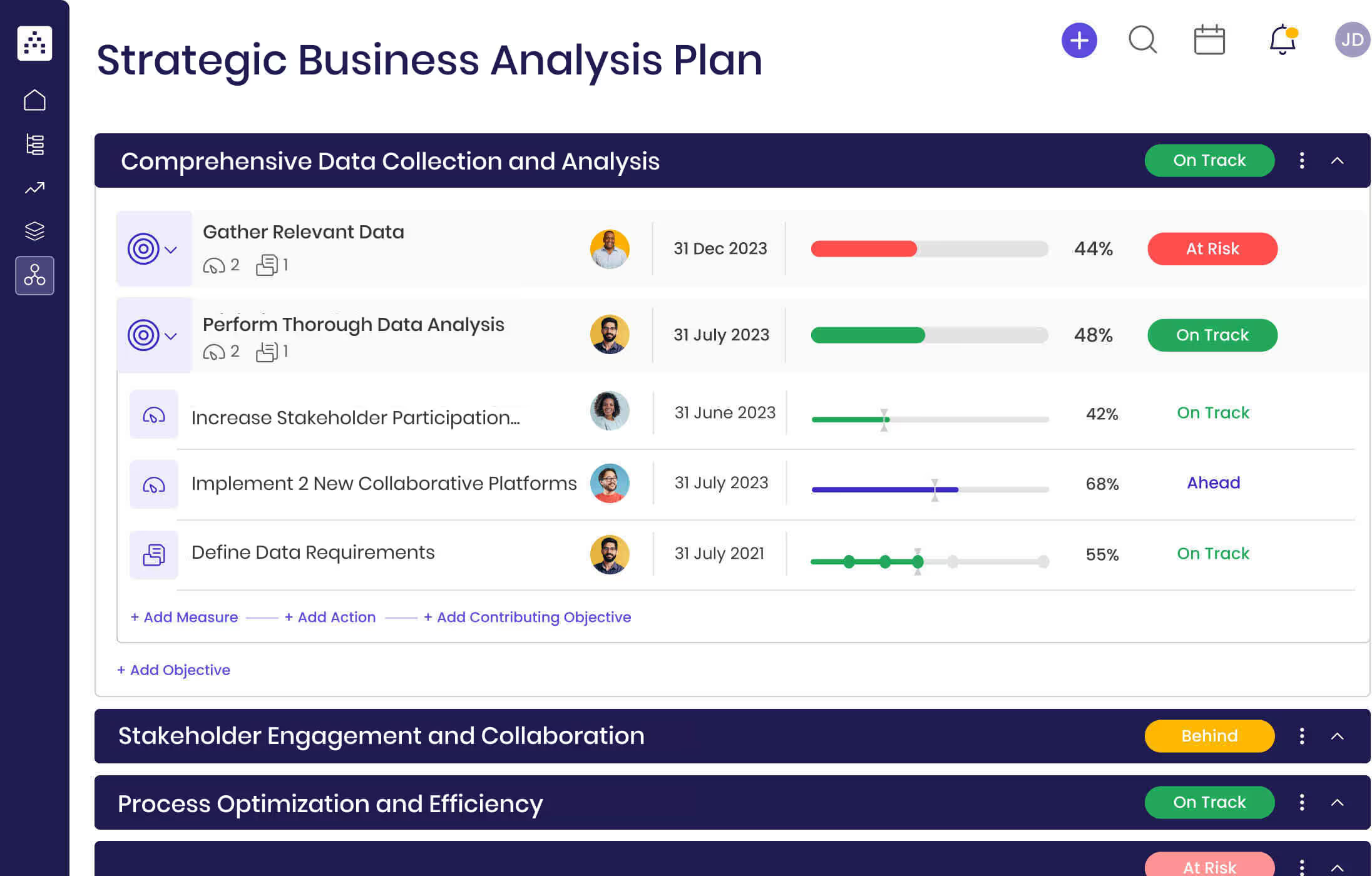What is a Strategic Business Analysis Plan?
A strategic business analysis plan outlines a systematic approach to thoroughly examine a business or organization's current state, assess the external environment to identify opportunities and threats, and set objectives to reach desired goals. The plan also outlines the strategies, tactics, and measurable targets that will help the business reach its goals.
What's included in this Strategic Business Analysis Plan template?
- 3 focus areas
- 6 objectives
- 6 projects
- 6 KPIs
Each focus area has its own objectives, projects, and KPIs to ensure that the strategy is comprehensive and effective.
Who is the Strategic Business Analysis Plan template for?
This strategic business analysis plan template is designed to help business analysts and teams outline a plan for conducting in-depth business analysis, gathering insights, and making informed strategic decisions. It can be used to ensure that all key stakeholders are on the same page and that all data-driven decisions are backed by data-driven insights.
1. Define clear examples of your focus areas
A focus area is a broad category or topic that is necessary to achieve the desired strategic goals. It is important to identify and define focus areas in order to set specific objectives and measurable targets that can help achieve the desired goals. Examples of strategic focus areas that could fall under a Strategic Business Analysis Plan could be: Comprehensive Data Collection and Analysis, Stakeholder Engagement and Collaboration, and Process Optimization and Efficiency.
2. Think about the objectives that could fall under that focus area
An objective is a goal that is specific, measurable, attainable, relevant, and time-bound (SMART). Objectives should be created for each focus area in order to define a clear path forward and measure progress toward the desired outcomes. Examples of some objectives for the focus area of Comprehensive Data Collection and Analysis could be: Gather Relevant Data, and Perform Thorough Data Analysis.
3. Set measurable targets (KPIs) to tackle the objective
A key performance indicator (KPI) is a measurable target that defines the success of an objective. KPIs should be quantitative, measurable, and meaningful. The KPIs should be set to ensure that objectives are achieved and that progress is being made toward the desired outcomes. An example of a KPI for the focus area of Comprehensive Data Collection and Analysis could be: Achieve 95% Data Relevance in Analysis.
4. Implement related projects to achieve the KPIs
A project (action) is an approach or solution to achieve a KPI. Projects should be specific, measurable, attainable, relevant, and timely (SMART). Projects should be identified for each KPI in order to ensure that progress is being made toward the desired outcomes. An example of a project related for Comprehensive Data Collection and Analysis could be: Utilize Advanced Analytical Tools.
5. Utilize Cascade Strategy Execution Platform to see faster results from your strategy
Cascade is the leading strategy execution platform for businesses of all sizes. Cascade helps teams align their goals and objectives, track progress, and measure success in order to achieve their desired outcomes faster. The platform provides an intuitive user experience and comprehensive analytics to help teams realize their vision and reach their goals.


